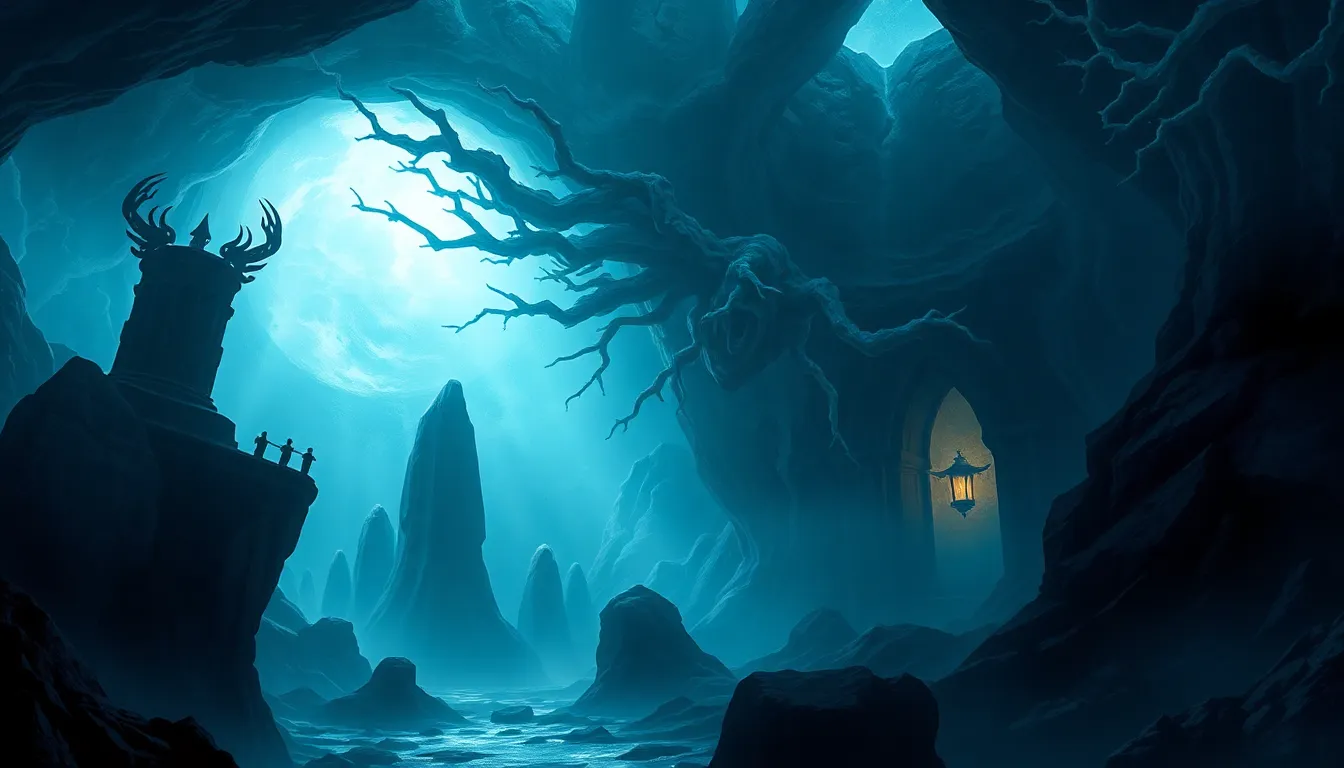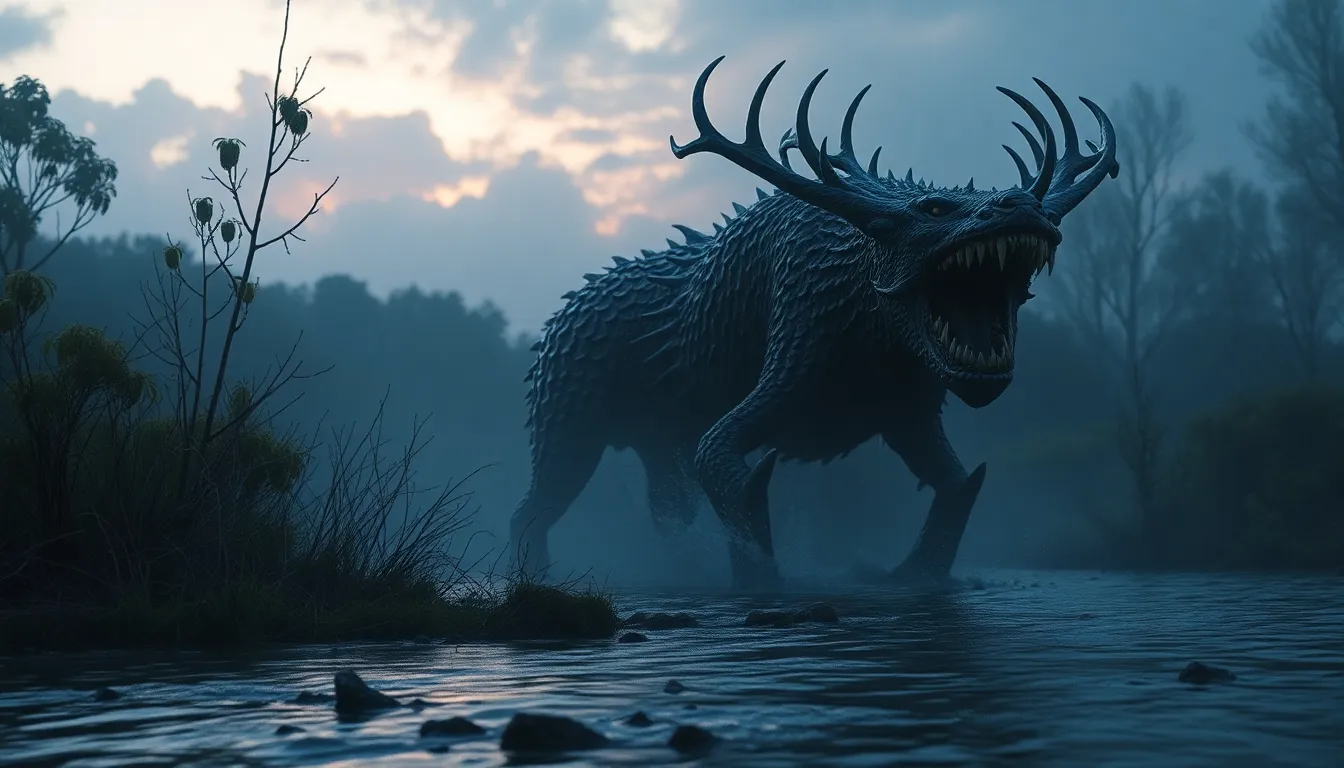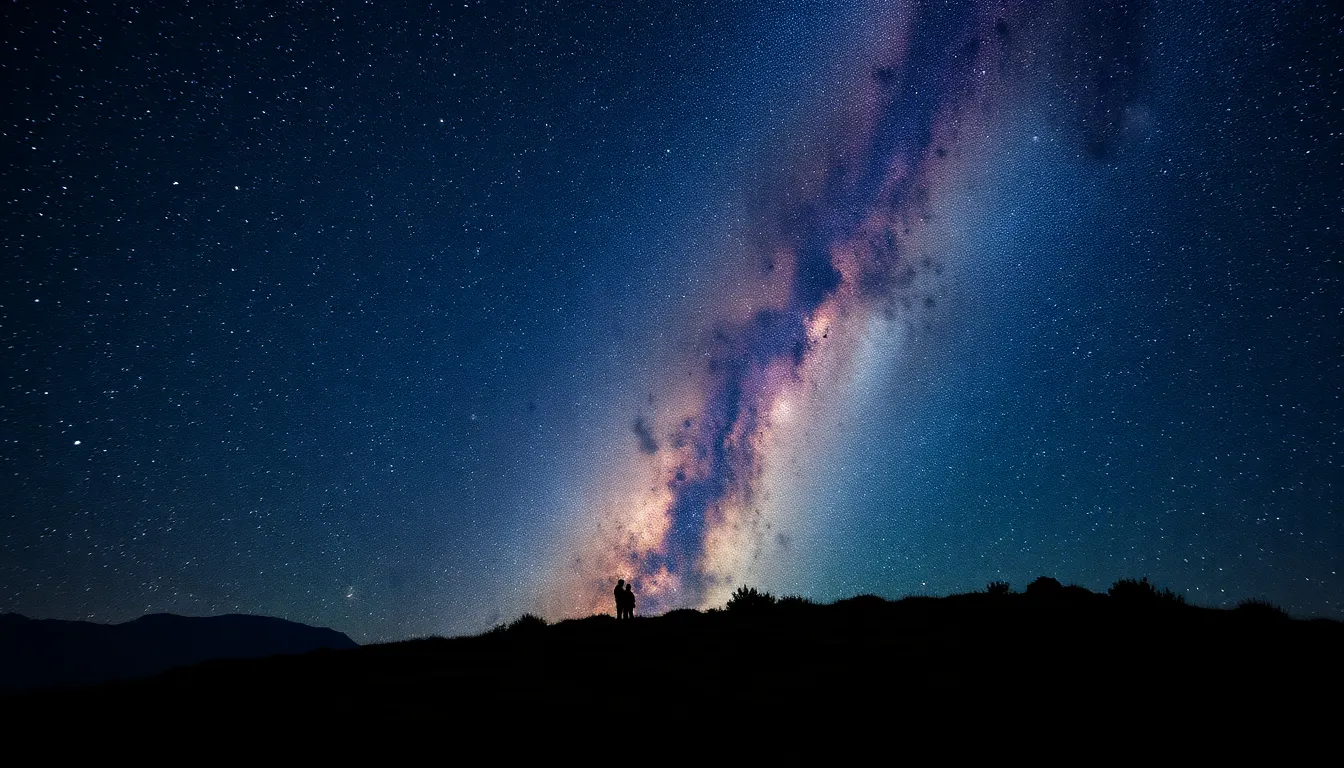The Underworld: A Mythical Realm of Shadows and Secrets
I. Introduction to the Underworld
The Underworld is a concept that has intrigued humanity for millennia. It represents a mythical realm that lies beneath the surface of the earth, often associated with death, the afterlife, and hidden knowledge. In various mythologies, the Underworld serves as a place where souls journey after death, and its significance can vary widely.
From the dark and ominous depictions in ancient texts to more nuanced portrayals in modern literature and art, the Underworld has held a profound place in cultural narratives. It invites exploration of themes like mortality, morality, and the human condition, influencing countless works of fiction, visual art, and philosophical discourse.
II. Historical Perspectives on the Underworld
A. Ancient civilizations’ views: Mesopotamia, Egypt, Greece, and Rome
Different civilizations have crafted their own interpretations of the Underworld, reflecting their unique beliefs and values:
- Mesopotamia: The Underworld, known as Kur, was a dreary and dark place devoid of light, where the dead existed as mere shadows.
- Egypt: The Egyptian Underworld, or Duat, was a complex landscape filled with trials, featuring the scales of Ma’at where the heart was weighed against a feather.
- Greece: Greek mythology presents the Underworld as Hades, ruled by the god of the same name, encompassing realms like Elysium for the virtuous and Tartarus for the damned.
- Rome: The Roman version was heavily influenced by Greek mythology, with the Underworld being a place of both punishment and reward, featuring figures like Pluto, the Roman equivalent of Hades.
B. The evolution of Underworld myths through the ages
Over time, the concept of the Underworld has evolved, adapting to societal changes and religious beliefs. The transition from polytheistic views to monotheistic religions often transformed the Underworld’s role, leading to more abstract interpretations of heaven and hell.
III. Key Figures of the Underworld
A. Deities and guardians: Hades, Osiris, and others
Central to the mythology of the Underworld are various deities and guardians, each with distinct roles:
- Hades: The Greek god of the Underworld, overseeing the dead and ensuring the balance between life and death.
- Osiris: In Egyptian mythology, Osiris is the god of the afterlife who judges the souls of the deceased.
- Pluto: The Roman counterpart to Hades, often depicted with a bident and associated with wealth as well as death.
B. The role of psychopomps: Charon, Anubis, and their functions
Psychopomps are guides for souls transitioning to the afterlife. Notable figures include:
- Charon: The ferryman of the Greek Underworld, who transports souls across the River Styx, demanding payment in the form of an obol.
- Anubis: The Egyptian god depicted with a jackal head, responsible for mummification and guiding souls to the afterlife.
IV. The Geography of the Underworld
A. Common representations: rivers, fields, and tormenting landscapes
Mythologies often depict the Underworld as a complex geography:
- Rivers: Rivers like the Styx and Acheron serve as boundaries between the living and the dead.
- Fields: Elysium, a blissful paradise for heroes and the virtuous, contrasts with the Fields of Punishment.
- Tartarus: A deep abyss used as a dungeon of torment and suffering for the wicked.
B. The symbolism of different realms: Elysium, Tartarus, and the Fields of Punishment
Each realm within the Underworld serves symbolic purposes:
- Elysium: Symbolizes eternal bliss and reward for the righteous.
- Tartarus: Represents punishment and the consequences of moral failure.
- Fields of Punishment: A place for souls who led lives of moral ambiguity.
V. The Journey to the Underworld
A. Myths of descent: Orpheus, Persephone, and others
The journey to the Underworld is a common theme in myths, showcasing various narratives:
- Orpheus: His descent to rescue Eurydice is a poignant tale of love and loss, emphasizing the power of music and despair.
- Persephone: Her abduction by Hades highlights seasonal cycles and the duality of life and death.
B. The significance of rituals and funerary practices
Rituals surrounding death often reflect beliefs about the Underworld, including:
- Burial practices that prepare the deceased for their journey.
- Offerings left for the dead to ensure safe passage and favor.
VI. The Underworld in Comparative Mythology
A. Similarities between different cultures’ Underworlds
While distinct, many cultures share similar themes in their Underworld beliefs:
- Concepts of judgment and afterlife destinations.
- Guides or deities who assist souls in their transition.
B. Unique traits of the Underworld across global mythologies
Despite similarities, unique cultural elements shape each Underworld:
- Viking Hel, ruled by the goddess Hel, reflects Norse beliefs about death and the afterlife.
- In Hinduism, Naraka serves as a temporary place of punishment before reincarnation.
VII. The Underworld’s Influence on Modern Culture
A. Representation in contemporary literature and film
Modern narratives continue to draw inspiration from Underworld myths:
- Films like “The Matrix” and “What Dreams May Come” explore themes of life, death, and the afterlife.
- Books such as “The Divine Comedy” by Dante Alighieri provide deep insights into the human psyche and morality.
B. The Underworld in modern spirituality and beliefs
Today, the Underworld remains relevant in various spiritual practices, influencing beliefs about life after death, reincarnation, and the nature of the soul.
VIII. Psychological Interpretations of the Underworld
A. The Underworld as a metaphor for the human psyche
Psychologically, the Underworld can symbolize the depths of the human mind, representing fears, desires, and unresolved issues:
- It invites introspection and confrontation with one’s darker aspects.
- Myths often provide frameworks for understanding personal struggles and growth.
B. Dreams and the subconscious: exploring the Underworld within
Many cultures view dreams as a gateway to the Underworld, where the subconscious manifests itself:
- Dreams may reveal suppressed fears or desires.
- Lucid dreaming can be seen as a journey through personal Underworlds.
IX. Secrets and Mysteries of the Underworld
A. Hidden knowledge and forbidden truths
The Underworld is often associated with esoteric knowledge, secrets that lie beneath the surface of consciousness:
- Initiation rites often involve descent into the Underworld, symbolizing transformation.
- Many myths suggest that the Underworld holds truths about existence and the cosmos.
B. The allure of the unknown and its impact on human curiosity
The mysteries of the Underworld continue to captivate the human imagination, driving exploration of the unknown:




